Per Götesson on the influential gay playwright, Joe Orton

The Swedish designer featured a makeshift “Joe Orton studio flat” in his AW20 collection. Here, we discuss the influence Orton had on the designer, and what the late playwright would make of today’s queer landscape.
A catwalk lined with urinals, a make-shift studio flat covered in ripped-out book pages and the eerie presence of a long-gone influential gay playwright… that’s the scene which the crowd sliding into Per Götesson’s recent AW20 show encountered. Curious? Us too.
Per Götesson’s clothes are sexy with a dash of sensibility – like a rough shag with a velvet condom (if you see what we mean?). His designs look like they belong in an underground gay club in Paris, but they’re not smutty – the hot gays wearing them haven’t lost touch with their emotions. They might even respond to your Grindr message.
It was while studying for an MA in fashion design at Royal College of Art in 2014, that Götesson was scouted by fashion fairy godmother Lulu Kennedy. Hailing from the province of Småland, Sweden, the designer has since shown three collections at London Fashion Week Men’s, despite only having lived in the city for six years.
This most recent collection was all bare chests, artful thigh-exposing slits, denim chokers, ruched hoodies which stopped above the midriff and liquid-like fabrics. It was his satirical take on the London queer scene he’s so heavily involved in. “It’s important to make people feel glamorous, attractive, even sexy.
“But you can’t feel those things if it’s sterile, then it just becomes a product,” he says. “You need to have a sense of humanity and for me, that’s having a layer of humour or satire”.

And the satire extended beyond the designs and onto the set, which was the brainchild of Tony Hornecker. The upside-down urinals lining the catwalk (a wry nod to golden showers) led to a makeshift studio apartment. In the apartment, the walls were covered in ripped-out book pages and old framed photos, a messily unmade single bed was pushed up against the wall, and a dainty white desk stood with a typewriter on it – the whole room was a direct nod to the influential 1960s gay playwright, author and diarist Joe Orton.
Orton famously defaced books stolen from Islington’s Finsbury Library and later spent six months in jail as a result. Through his dark humour, he pissed off the upper-classes by sending outrageous letters under the pseudonym Edna Welthorpe to churches and various establishments. His outrageous humour was in the 1987 film Prick Up Your Ears, which was based on a bio.
We decided to meet Götesson in the same library that Orton would regularly visit (and steal from) to discuss how his life has informed and inspired the designer, what Orton would think of Brexit and what he would make of London’s current queer scene today. Handily, Götesson now lives just around the corner from where Orton spent his formative years.
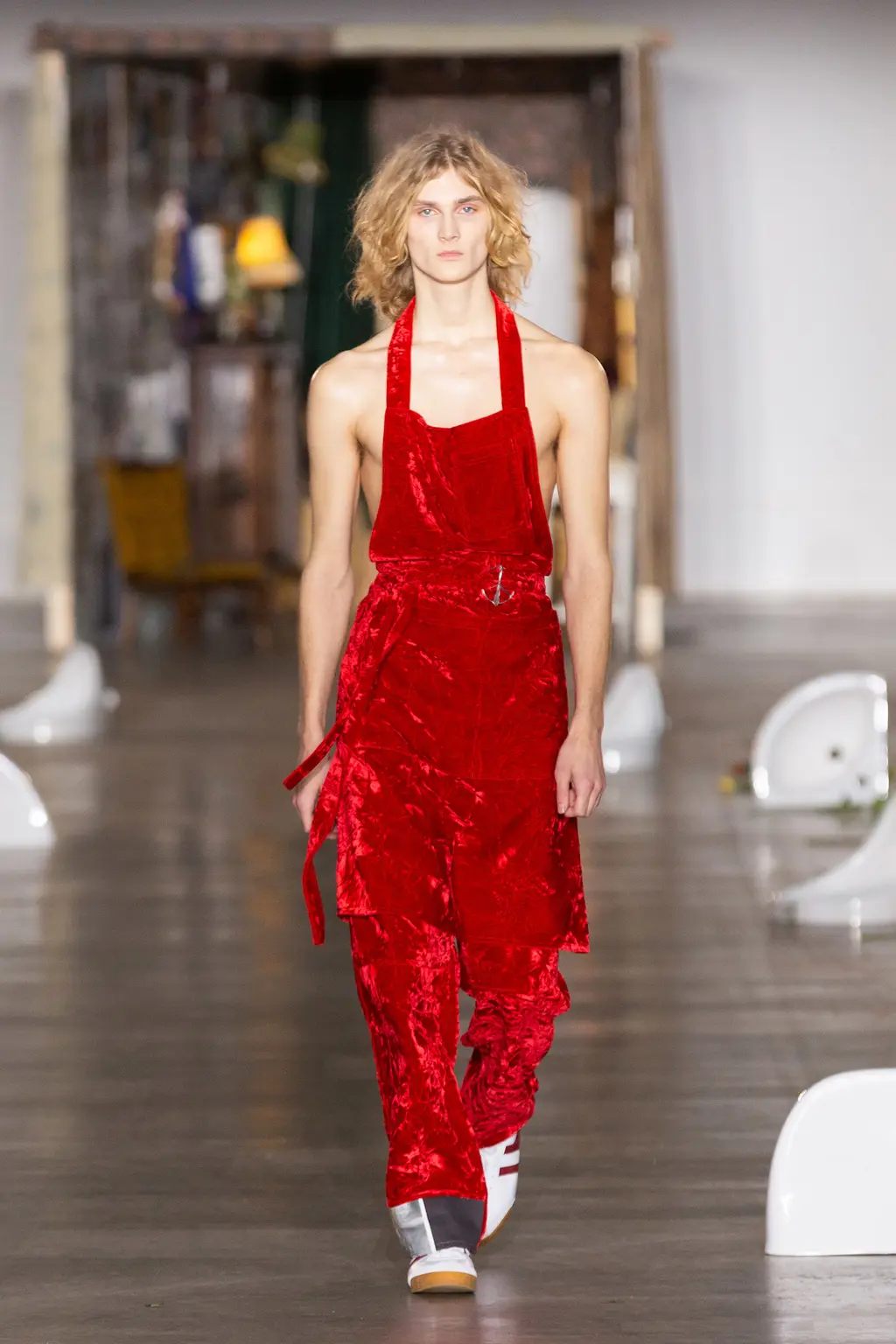
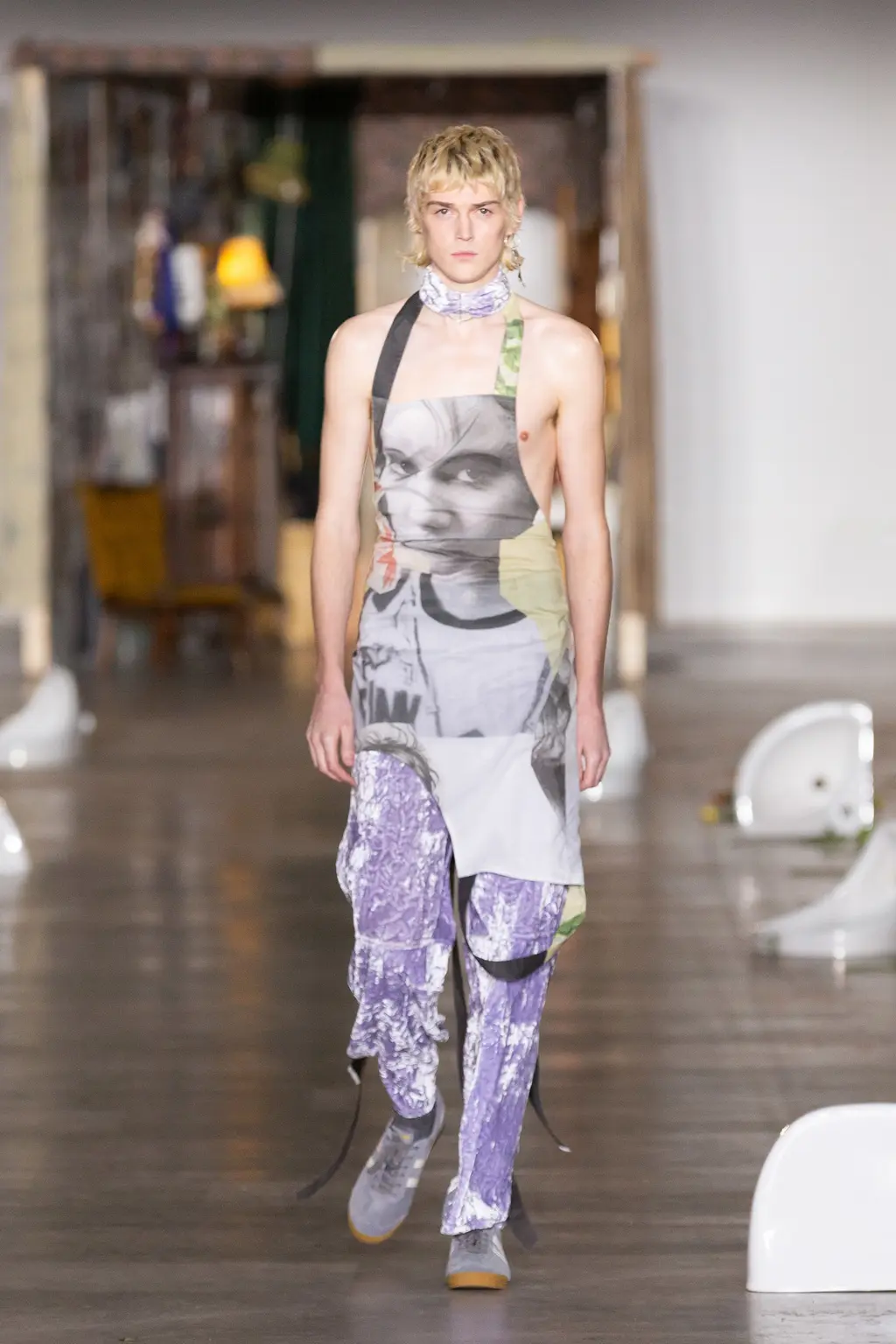

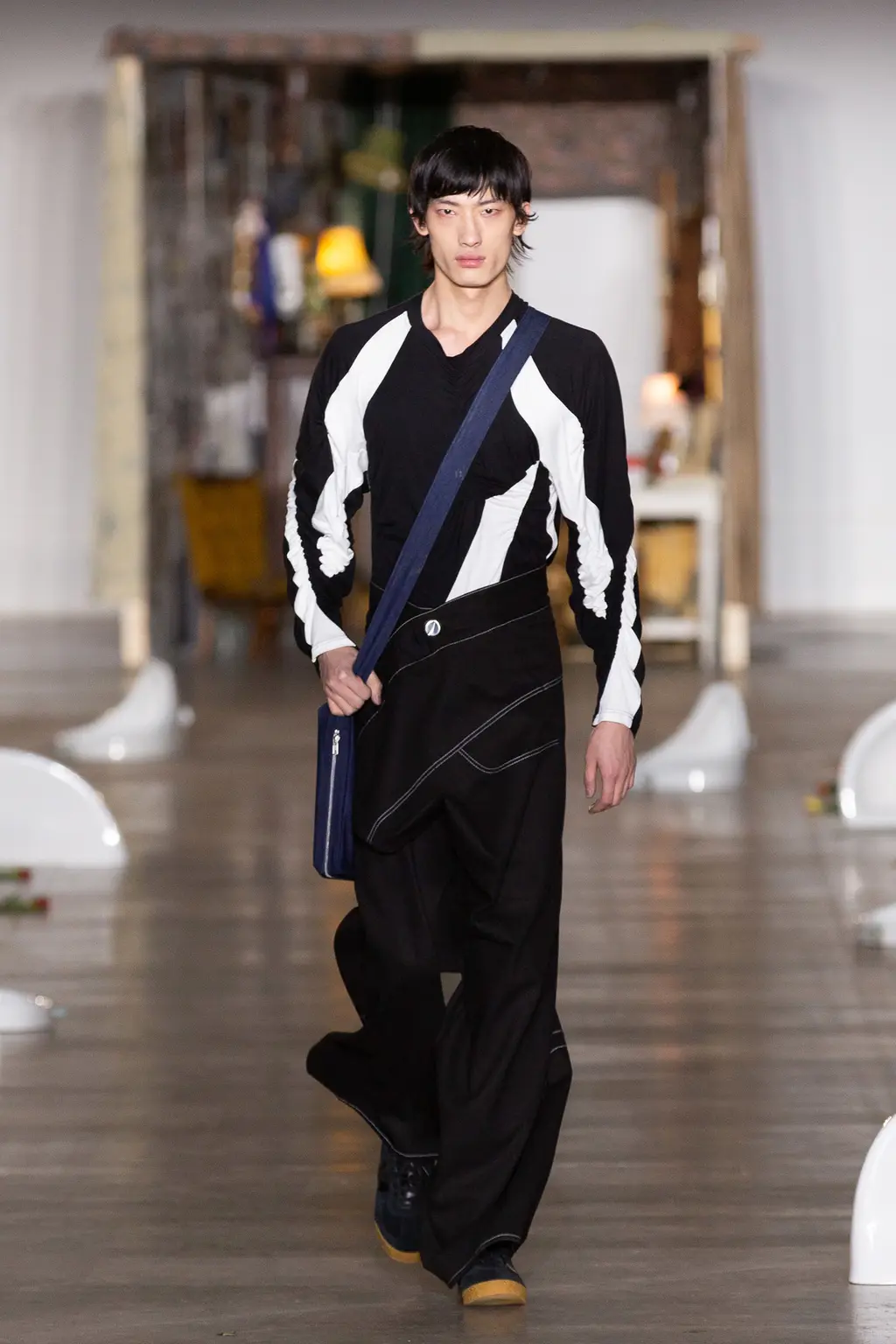
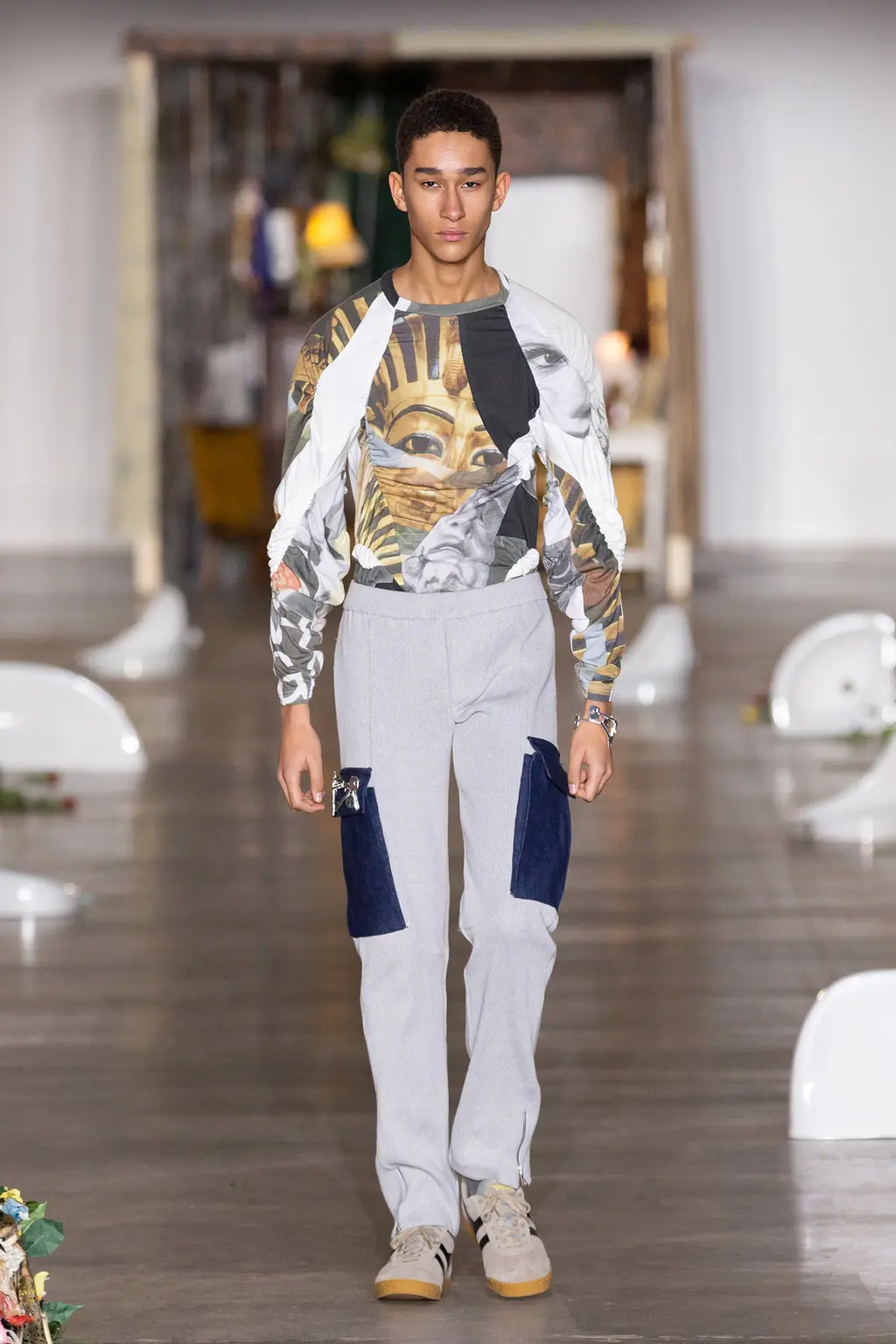
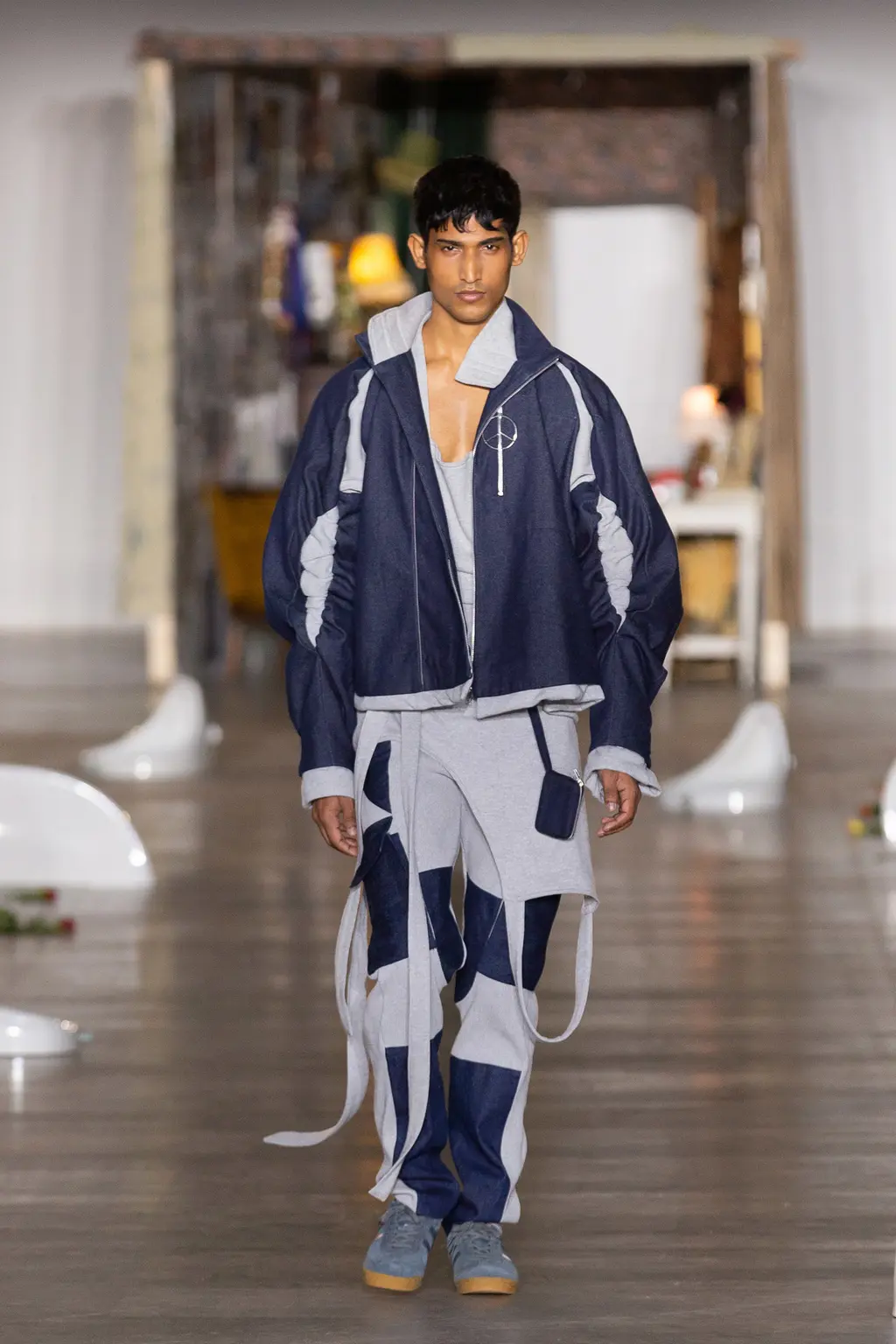
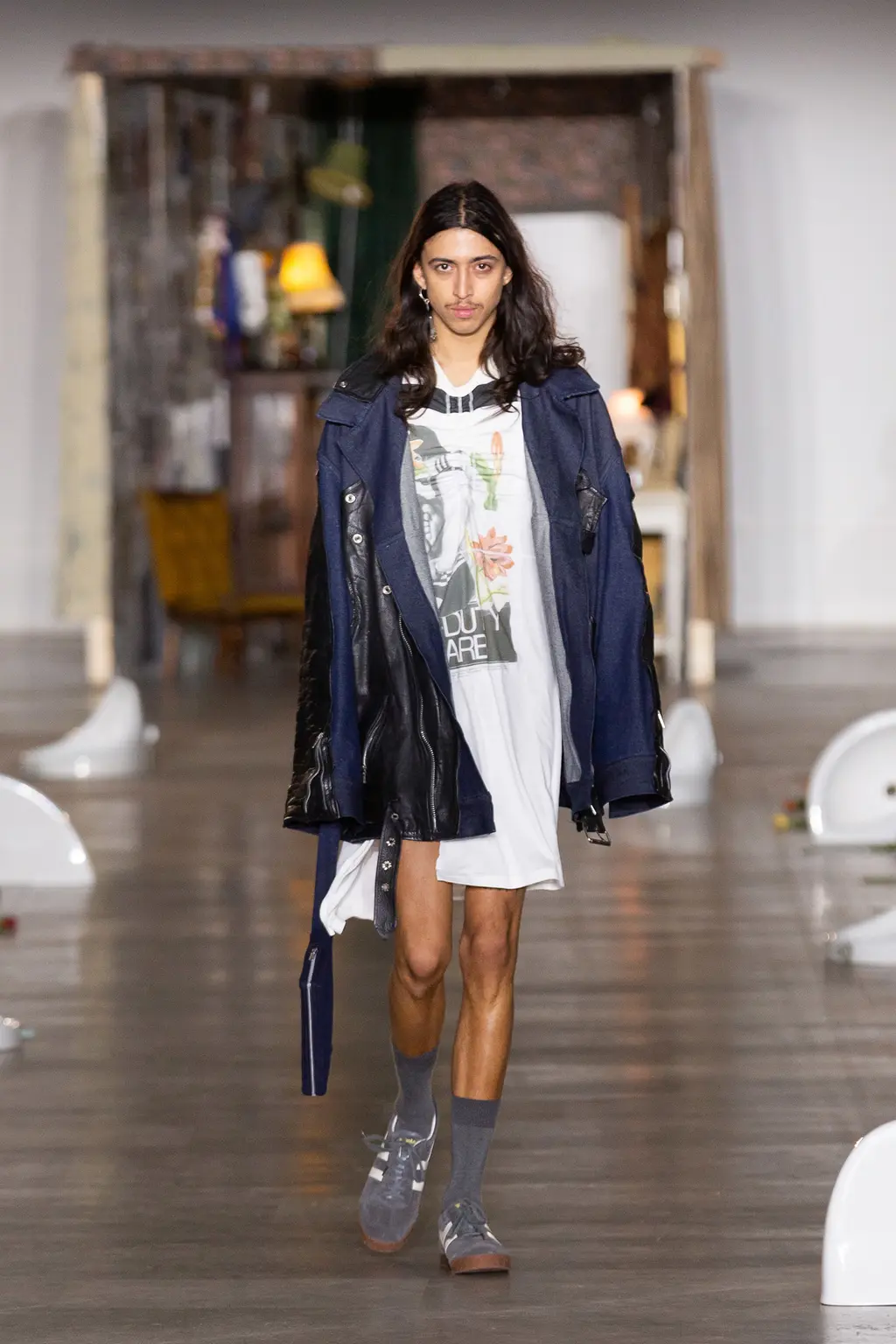

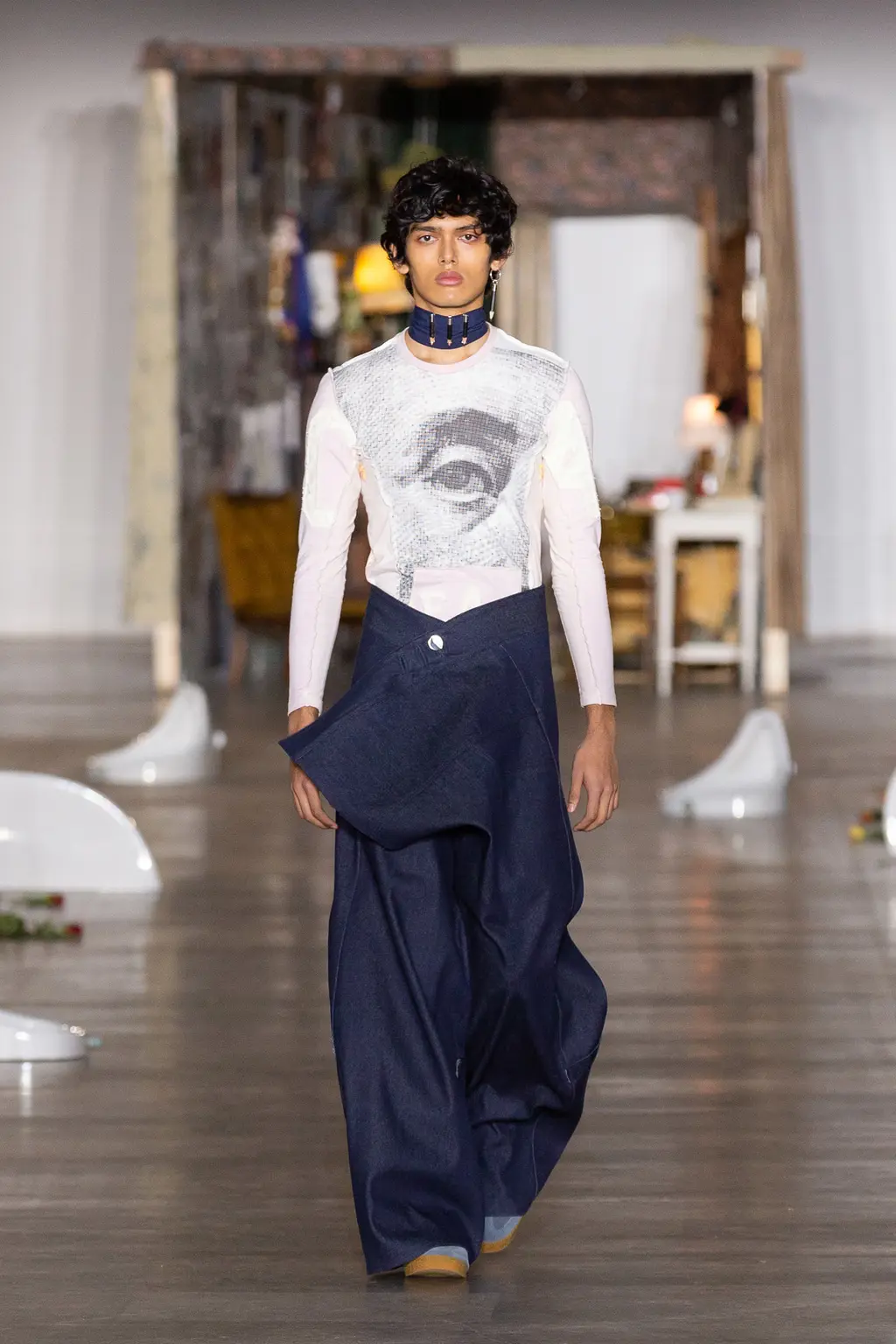
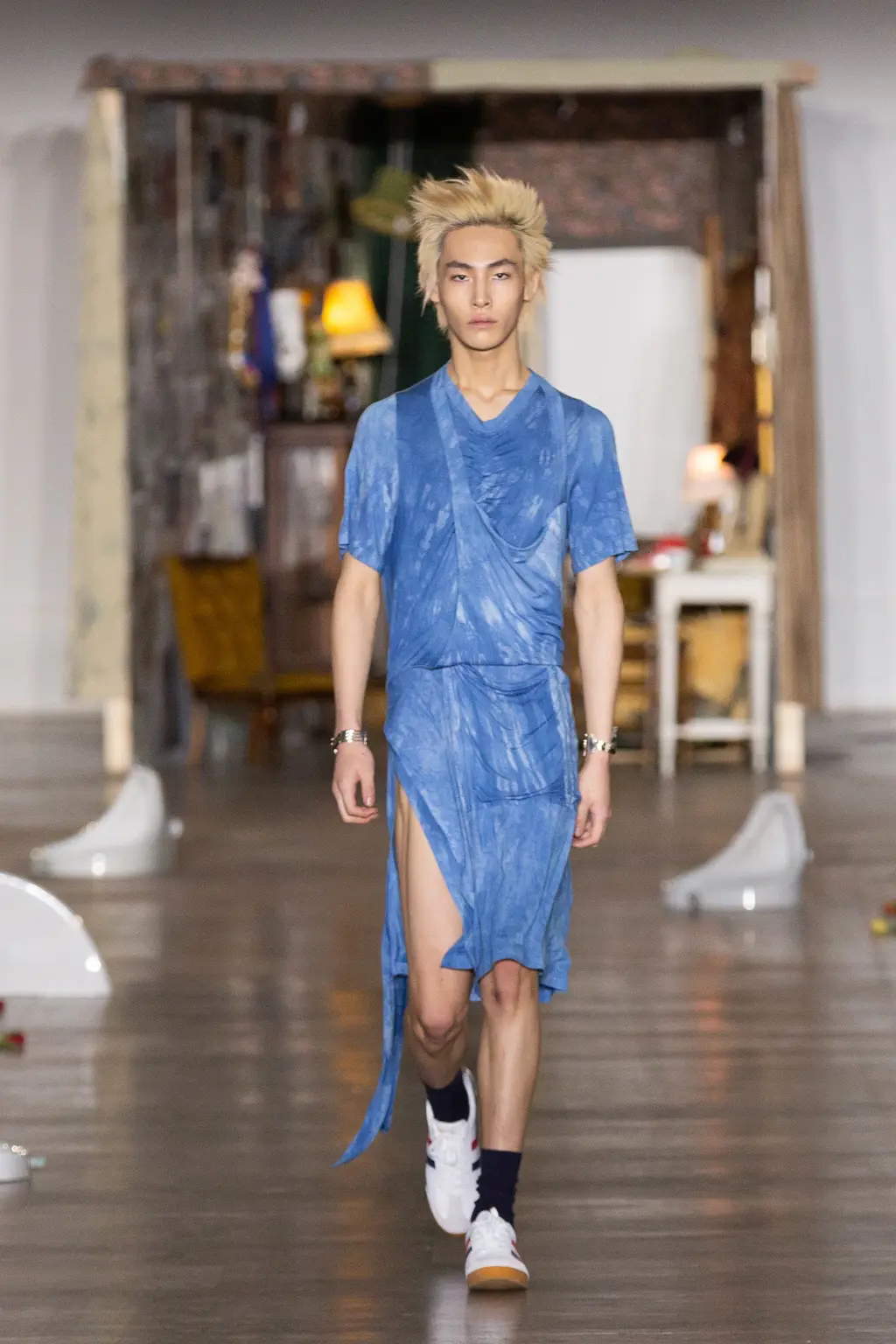
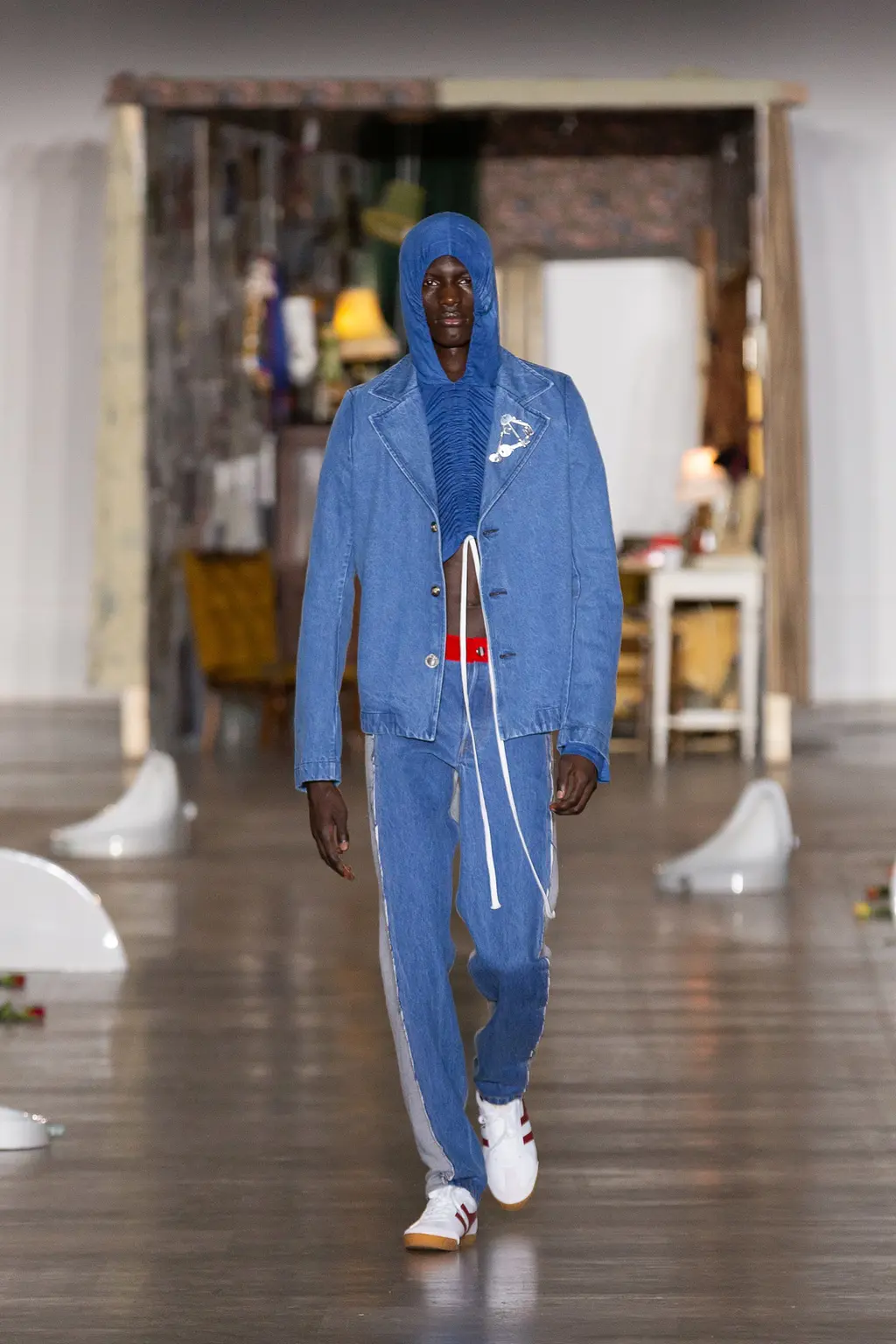
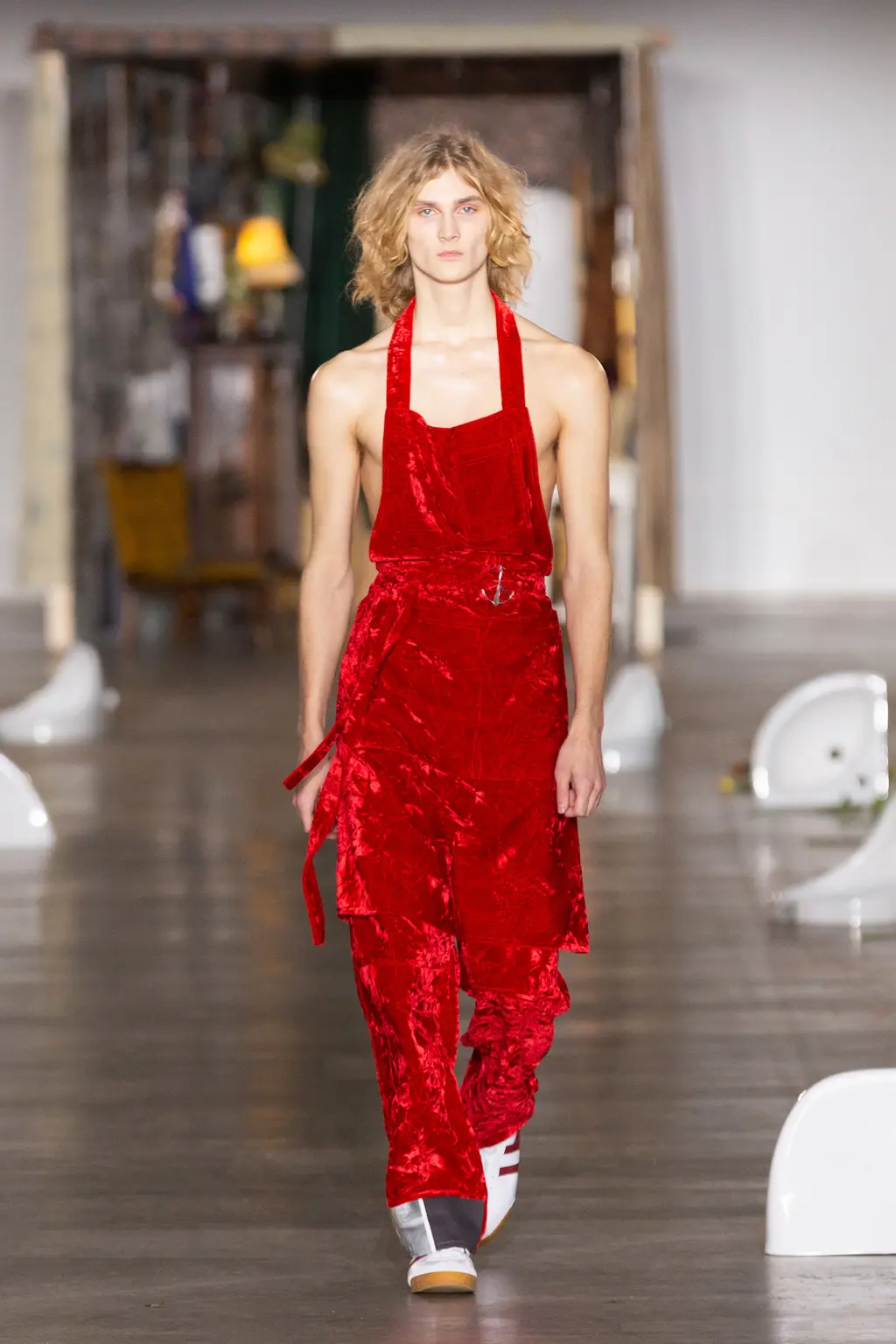
Hey Per, how are you today?
Good, thanks!
Great. How did you discover Joe Orton?
It was my partner Husam El Odeh who introduced me to him. We watched the film, Prick Up Your Ears.
From there I became really interested [in Orton himself], so I decided to find more information. I did a Google search and then I realised that they had quite a bit of information on him in Finsbury Library, so I spent two days in the archive – the staff were really nice, they took everything they had out for me.
What did you love most about Prick Up Your Ears?
How subversive Orton was. I feel like there wasn’t really a “place” for Orton in [society], so he started picking apart the [usually upper-class] people who were claiming [arts] spaces at the time – which, with my working class background, I really connected to.
This idea of not belonging in society became even more amplified when all this Brexit spiel happened. As a European, I thought “Okay, what am I doing here right now?
If Joe was alive now, what do you think he would think of Brexit?
He’d probably think it’s all stupid nonsense, to be honest. And he would probably write a public letter to Boris Johnson. I think he might also make a new version of the Union Jack in some way.
Was the fact that Orton was from a working-class background important for you?
It definitely resonated with me, yes. I’ve always been really conscious of my background – thinking that the people in my MA were talking about art and fashion at home with their families and [my family] never did that. I went through years of thinking nobody understood me, but then as I developed my work I realised this could inform my work in more productive ways, so it became something positive.
How did it become positive?
Well, I always think about class in a sense. A lot of my work is about identities and my own identity, too, but I’m always trying to place it into some sort of historical context. But it’s not that I’m trying to find the connection, it was just a natural thing for me to look at.
What did you specifically take from Orton’s life to inform the collection?
Visually, I really picked up on the collages and the specific books he chose. It was always books targeted to a certain type of person: the middle and upper-middle-classes to claim that space in culture, I think. I was really drawn to that element.
His ways of being subversive and playing tricks was more the general idea of Joe Orton which I really took on board. In a way, his flat reminded me of mine and Husam’s flat – two creatives living together, creating things and creating this preciousness in everyday things.
What was your reaction when you realised he had lived around the corner from you?
I really connected through my role as a queer man and my queer identity and what that means to me. Orton grounded that and with him having lived here it made me feel a sense of belonging. I think I always try to find my “place” wherever I go.
A makeshift version of Orton’s flat appeared in your AW20 show. Tell me a bit about that…
The apartment Orton and his partner, Kenneth Halliwell, shared has a very tragic end because Halliwell murdered Orton in the end. But the apartment was this tiny studio flat on Cross Street in Islington. There was a single bed and a typewriter where Joe Orton always wrote his diary. He was a very advanced cottager so he would go to public toilets to find men to fuck and he’d write about them in his diary.
I wonder if Kenneth ever read the diary…
Well, he always left it open so his partner read all his stories and it affected him really negatively. The whole flat was plastered in pictures of Roman sculptures from the library books he took from here. These images, for me, played on the idea of value – it was a mixture of something stolen but also these beautiful sculptures. In our work, we always play with value in a way. It was so powerful when I saw those pictures [of Orton’s flat], it just connected with all of these ideas we have so we really wanted to pay homage to him in the set and reinterpret this flat, which we had the models walking through as they entered the catwalk.
What were the urinals in the show about?
It was a way for me to connect with my queer people and queer history. Tony Hornecker, who made the set, ran an event for a few nights during Christmas which was about cottaging and he was left with all these urinals. We turned them upside down so they became more like abstract sculptures, so again playing with value. Perhaps it was also a nod to Marcel Duchamp, putting something in a different context.
Have you taken any life lessons from Orton?
He just didn’t give a shit, did he? But then he also paid for it, sadly. I think he had somewhat of an unhealthy relationship with his own ego. We all have big designer egos and maybe that’s what I took away – not to be so egocentric!
Did you notice any other similarities?
He lived in a different time. Something to be said about him being queer and gay at that time – you can’t take for granted that we are in a safer space now but I think that’s perhaps more black and white and he chose to be an activist in many ways through his art. I do something similar but in a different way perhaps. And what I do now maybe wouldn’t have worked in his time and what he did back then wouldn’t maybe have worked in the same way now. But still, we’re working from similar issues and similar experiences.
What do you think he would make of the queer scene in London?
I think he’d find it quite lame, to be honest.
He would miss the sense of activism. Social media has changed a lot, and people don’t connect in the same way. He would have missed that. Even cottaging has been reduced with Grindr. We’ve lost the anonymity from that culture – now, we always need to know the answer before we ask the question.













